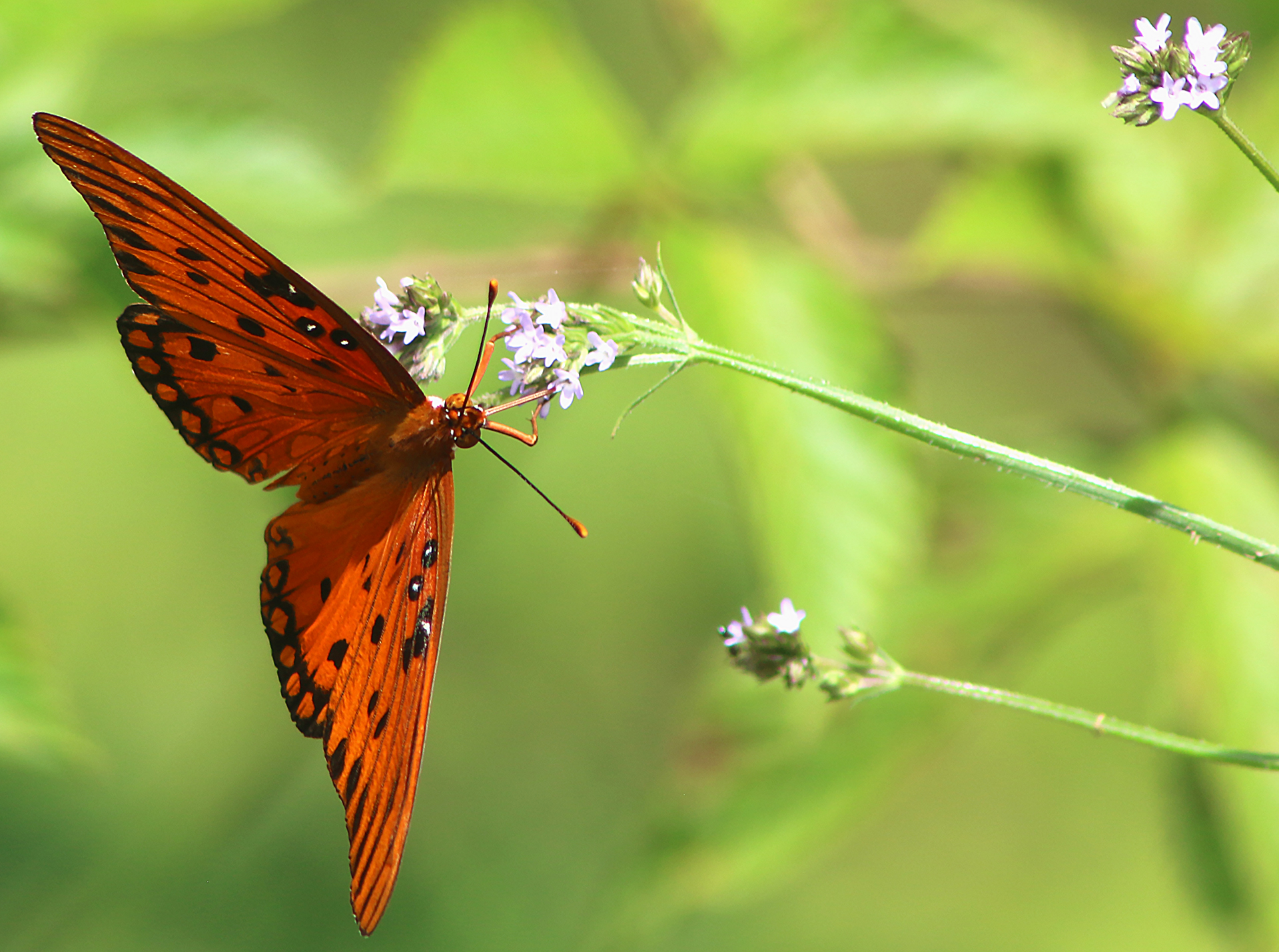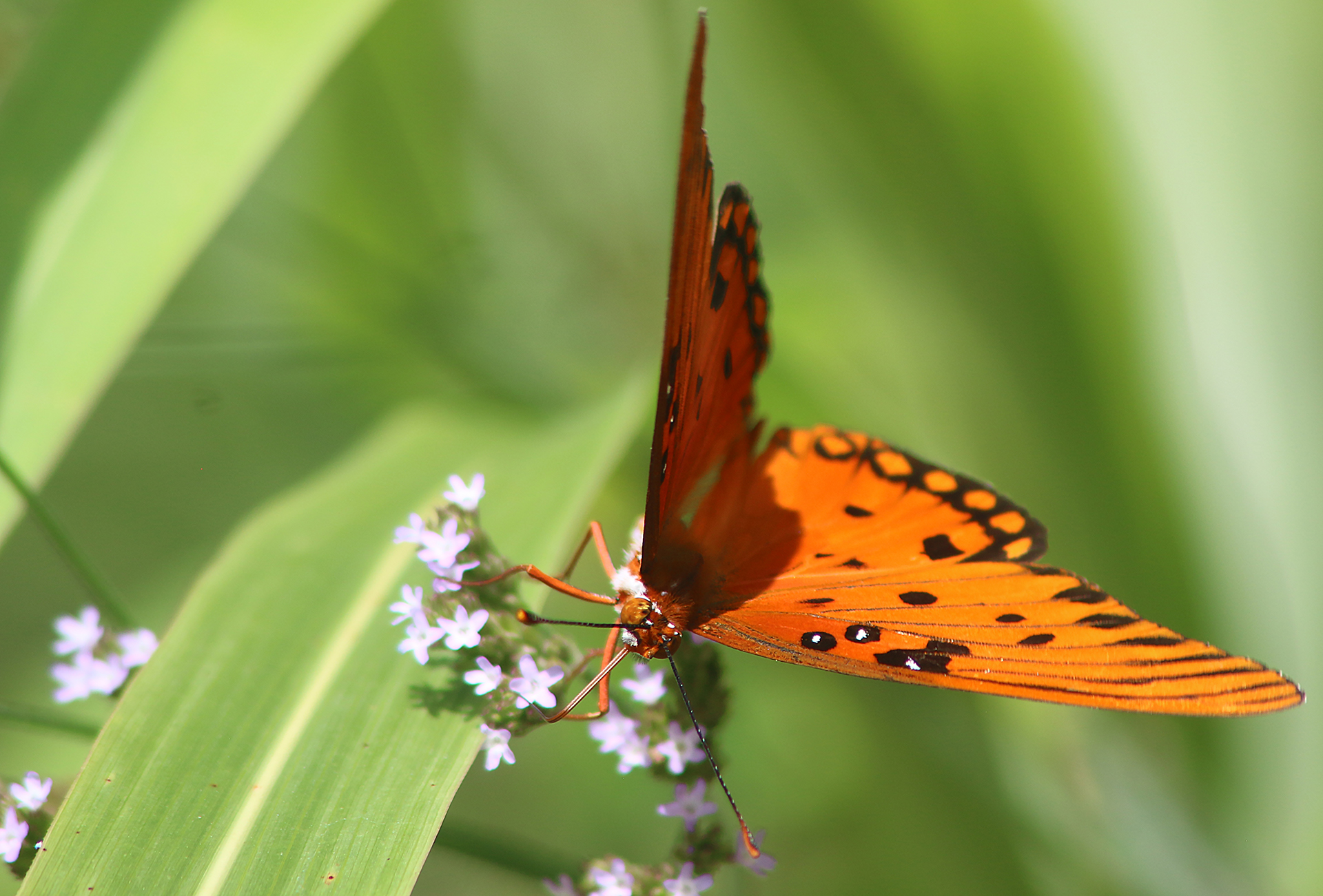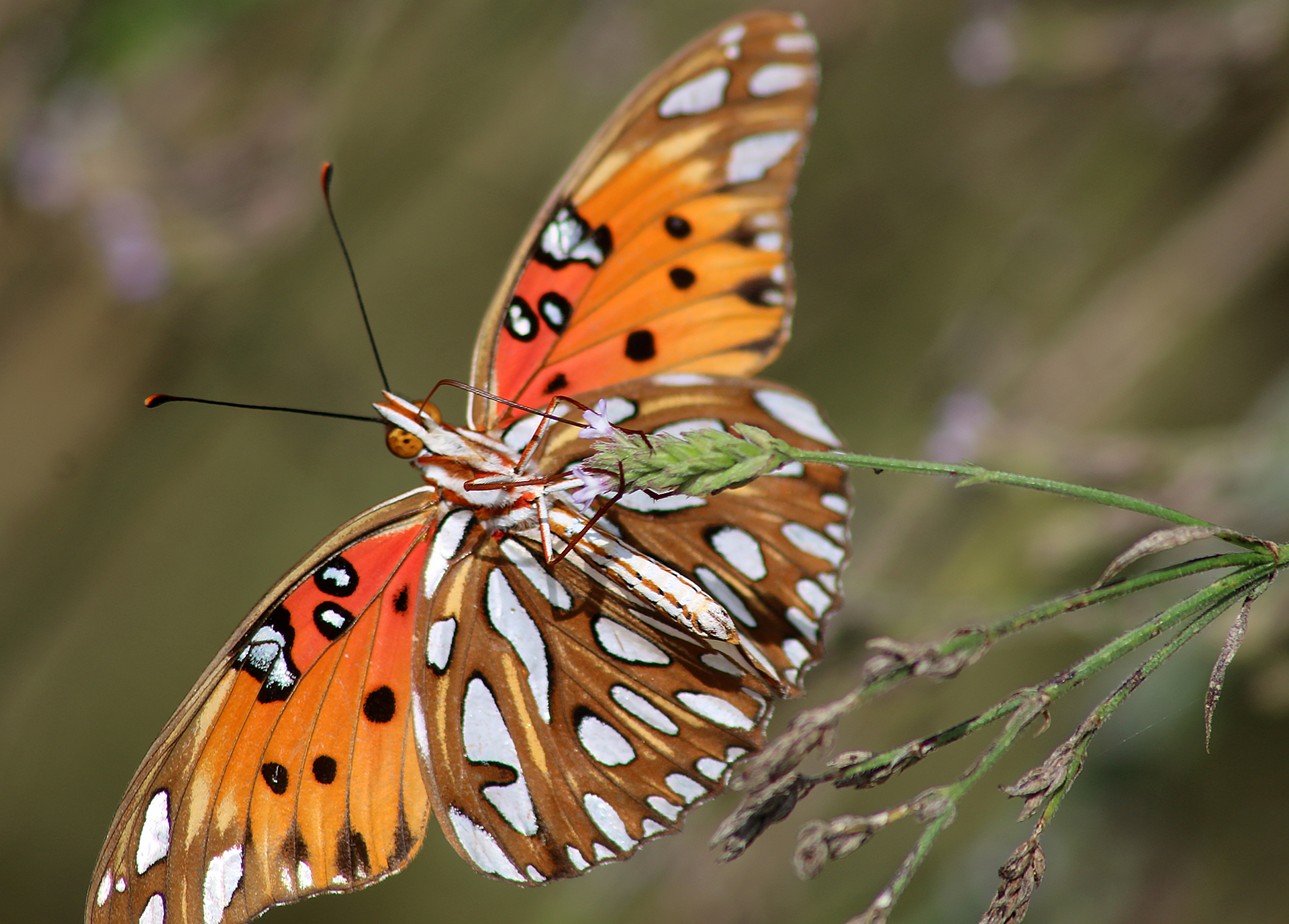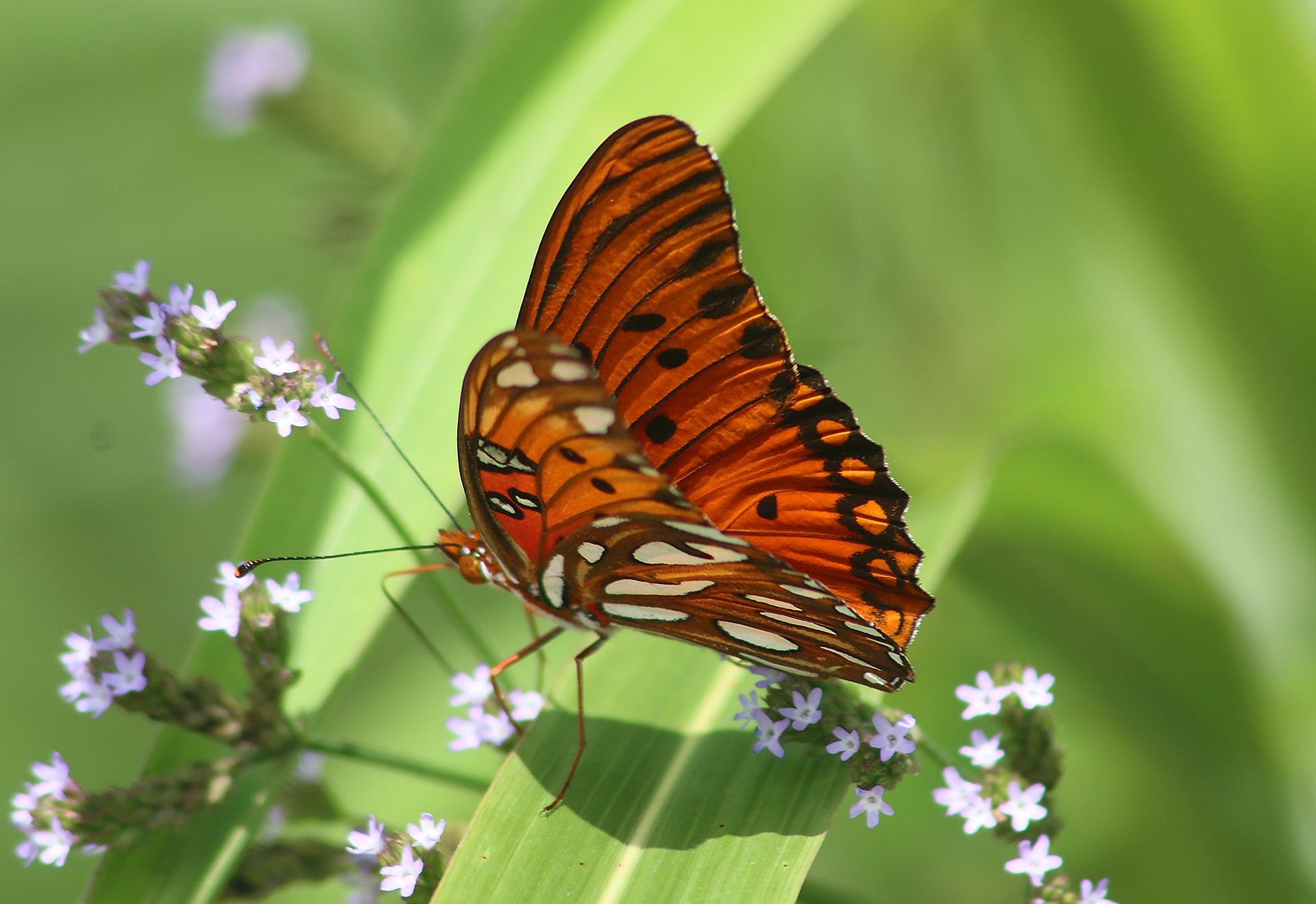The Gulf fritillary butterfly — which is also known as the passion butterfly or by its scientific name of dione vanillae — is only one of approximately 750 species of butterflies in the United States; and of as many as 17,500 known species of butterflies in the world.
Gulf Fritillary Butterfly. Sunday Morning Photograph.

Its dorsal view consists of a mostly deep orange body and wings, which also sport three white spots that are outlined in black; and the bottoms of the wings are orange spots in a row that are also outlined in black. Some black spots also appear in the middle of the wings themselves.

The ventral view of this butterfly is light brown and speckled with silvery white dots that are outlined in black.

Although the Gulf fritillary butterfly is most commonly found in Florida and other states in the southeastern United States, their range can extend into parts of Mexico and Central America — and sometimes as far as parts of South America, Hawaii, and even in the central valley of California.

Compared to their male counterparts, female Gulf fritillary butterflies are usually larger, darker in color, and are marked with more streaks of black.

Attractive as they may be — especially to birds of prey — Gulf fritillary butterflies defend themselves by releasing odorous chemicals in response to sighting their predators . This chemical defense mechanism results in common predators learning to avoid this species.

These butterflies are classified in the subfamily Heliconiinae of the family Nymphalidae.

The proboscis of this particular butterfly extends into the flower itself — but it does look like it is sticking its tongue out as it poses for the camera. Its legs seem to resemble those of a snow crab. Would this not be a great costume for Halloween — mask and all?

Eggs are laid on passionflower vines, which its caterpillars consume. Caterpillars are also known to be cannibalistic — which means that they eat each other when food is scarce.

Final Boarding Call
The monarch butterfly was the one with which I was most familiar while growing up in Brooklyn, as they were quite common — but at least one billion monarch butterflies have vanished between 1990 and 2015 due to the loss of their habitats and food sources by the use of herbicides and corn and soybeans which have been genetically modified.
The Gulf fritillary butterfly reminded me of the monarch butterfly, as both are predominantly orange and black in color.
The purpose of the weekly series of Sunday Morning Photograph articles is to feature photographs from my travels around the world which you can view while enjoying your morning coffee.
Please click here for a complete list of the Sunday Morning Photograph series of articles at The Gate With Brian Cohen, which include photographs taken of nature and sights of interest in many countries and territories around the world — including but not limited to:
Andorra • Argentina • Bahamas • Bahrain • Belarus • Brazil • Bulgaria • Canada • China • Chile • Colombia • Cyprus — including the Turkish Republic of Northern Cyprus • Czechia or Czech Republic • Denmark • Dominican Republic • Egypt • England in Great Britain in the United Kingdom • Estonia • Finland • France • Germany • Hungary • Iceland • Ireland • Italy • Kenya • Latvia • Lebanon • Lesotho • Liechtenstein • Lithuania • Luxembourg • Malaysia • Morocco • Mozambique • Netherlands • Oman • Panama • Philippines • Poland • Portugal • Romania • Singapore • Slovenia • South Africa • South Korea • Spain • Swaziland or Eswatini • Sweden • Switzerland • Thailand • United Arab Emirates • United States of America • Uruguay
All photographs ©2022 by Brian Cohen.

